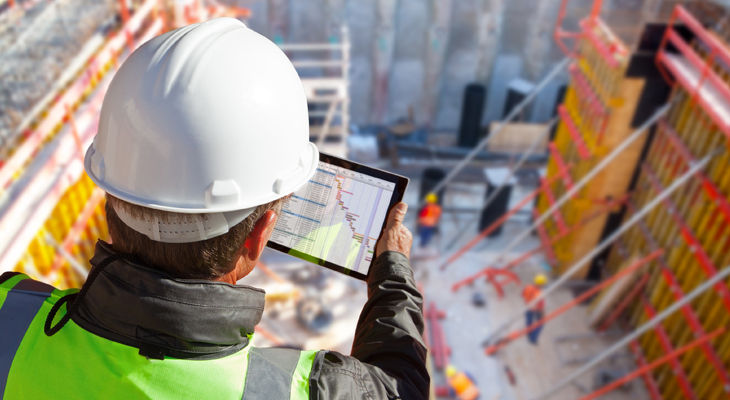Understanding Material Take-Off (MTO): A Comprehensive Guide
- amir6932
- May 16
- 3 min read
Updated: Jul 7
Material Take-Off (MTO) is essential for accurate project estimation and resource planning in construction, engineering, and manufacturing. This guide breaks down what MTO is, its importance, types, tools, challenges, and best practices to help you streamline your workflow and reduce project costs.
Introduction to Material Take-Off
Material Take-Off (MTO) is a fundamental process in various industries. It involves quantifying and listing all materials required for a project. Accurate MTO enables efficient budgeting, minimizes waste, and streamlines procurement and scheduling. In this article, we will explore its definition, significance, methods, tools, and emerging trends.
Ensuring precise MTO can significantly affect project success. It lays the groundwork for better financial planning and resource management. For contractors and project managers, it means fewer surprises and smoother operations.
What is Material Take-Off?
Material Take-Off refers to the process of extracting and calculating the quantities of materials needed from project drawings, blueprints, or digital models. It is widely used across industries such as:
Construction – Buildings, infrastructure, renovations
Oil & Gas – Piping systems, structural steel
Manufacturing – Raw material estimation and inventory planning
Shipbuilding & Aerospace – High-precision component counting
MTO can be performed either manually using printed plans or digitally with specialized software. Each method has its advantages and drawbacks.
Types of Material Take-Off
1. Manual Take-Off
Materials are measured directly from printed blueprints using rulers, scales, and calculators.
This method is suitable for small projects where digital tools are not accessible.
However, it can be time-consuming and is prone to human error.
2. Digital Take-Off
This approach utilizes software to automate quantity extraction from CAD or BIM models.
It offers higher speed, accuracy, and scalability.
Digital methods are preferred for large or complex projects.
Choosing between manual and digital methods depends on project scope, complexity, and available resources. Each choice impacts estimation accuracy and efficiency.

Steps to Perform a Material Take-Off
Follow these steps for an effective Material Take-Off process:
Review Project Documents
Analyze architectural, structural, and MEP (Mechanical, Electrical, Plumbing) drawings in detail.
Identify Materials
Create a comprehensive list of required items such as concrete, steel, wiring, or pipe fittings.
Measure Quantities
Use manual or digital methods to calculate lengths, areas, volumes, or counts.
Include a Waste Allowance
A good practice is to add 5–10% for potential cutting errors, handling losses, or material defects. This reduces the risk of underestimating the required materials.
Generate Reports
Compile results into a Bill of Quantities (BOQ) for purchasing and scheduling.
Standardizing these steps helps teams stay aligned and ensures smoother downstream activities in procurement and execution. Following a structured approach will help you avoid potential pitfalls.
Top Material Take-Off Software
Choosing the right software depends on the scale of the project, integration needs, and team workflows. This consideration is crucial for optimizing performance and achieving project goals.
Challenges in Material Take-Off
Some common challenges in MTO include:
Human Error – Manual processes are time-intensive and susceptible to oversight.
Design Complexity – Advanced geometries or custom materials require BIM expertise.
Plan Revisions – Updates to drawings often call for recalculations, leading to delays if not managed properly.
For example, a delayed plan revision on a hospital project may require a full recalculation of MTO, affecting delivery schedules and costs. Understanding these challenges is key to minimizing risks and enhancing project outcomes.
Future Trends in Material Take-Off
Looking ahead, several trends are shaping the future of MTO:
AI & Machine Learning – These technologies can automatically extract quantities from 2D drawings or rough sketches. They help reduce manual effort and enhance accuracy.
IoT Integration – Using RFID and sensor data, teams can track real-time material usage on-site. This real-time data boosts transparency and accountability.
Generative Design – AI-driven optimization of material usage based on performance criteria will transform how materials are specified and utilized.
These technologies will dramatically reduce manual effort, improve real-time visibility, and enhance decision-making.
Conclusion
Material Take-Off is a critical component of successful project execution. Accurate MTO improves cost control, reduces waste, and ensures timely procurement. By embracing digital tools and following industry best practices, teams can enhance both accuracy and efficiency. Ultimately, this paves the way for smarter, faster, and more cost-effective project delivery, making MTO fundamental for any ambitious construction or engineering project.




Comments